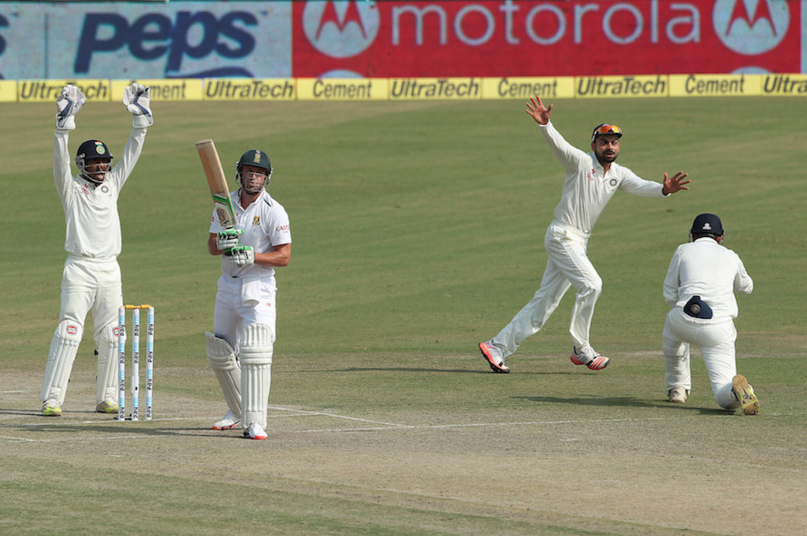Many people defended the decision to experiment with Vernon Philander opening the batting as South Africa chased 218 to win the first Test.
I disagree. The thinking behind sending in Philander, who also opened the bowling, was that he could have a bit of a swing, and any runs knocked off early would be a bonus in what was a small chase in terms of numbers, but big on a Mohali pitch that had seen scores of 201, 184 and 200.
The experiment failed and Philander was out second ball for one. Those defending the decision reckon no damage was done. I reckon it was the opposite.
With Philander being beaten by Ravi Jadeja’s first ball, one which simply continued its line angled in at the stumps, those padding up in the dressingroom would have been spooked by what they saw – even if they won’t admit it.
The psychological aspect of a wicket falling early to spin, will have damaged already fragile minds. In the first innings, in collapsing to 184, the seeds of doubt in their abilities on that pitch had already been planted. Such an early second innings setback only added to those doubts.
The Mohali pitch, in its third day, was a dustbowl, and one in which the odd ball popped and spat, while occasionally balls kept low, but it wasn’t a violent turner. South Africa’s batsmen however embedded it in their minds that they were playing on a pitch which was turning sideways.
It wasn’t. It was a pitch prepared to suit India’s spinners more than that of the Proteas and that’s called home ground advantage.
In both innings, though, AB de Villiers went through patches that suggested he was playing on a different pitch. In the first innings he lived a charmed life early but then his foot movement, reverse sweeping and trying to knock the bowlers off their lines and length was a mini masterclass. In the second innings he looked solid until himself playing for the spin when there was none.
Consider these dismissals and accept that it was poor decision-making by the Proteas batsmen rather than quality bowling on a pitch that was a minefield.
Stiaan van Zyl was lbw not playing a shot to a ball that didn’t turn. Faf du Plessis was bowled not playing a shot that went straight on. Dean Elgar went for a slog against the spin of a regular offspinner and was caught. Hashim Amla inexplicably left a ball that simply went straight and hit middle stump. De Villiers and Dane Vilas were bowled by balls that didn’t turn.
You get the drift.
Back in 2009 in Sydney, Graeme Smith was injured in the first innings and when the Proteas came out in their second innings, needing an unlikely 375 to win, they sent Morne Morkel out to open the batting. He made a second ball duck, before Neil McKenzie and Hashim Amla put on 66 for the second wicket. Modern opening bowlers aren’t equipped to be opening batsmen, certainly not when playing Australia in Sydney or India in Mohali.
In those two experiments featuring Philander and Morkel, they lasted a collective four balls and totalled one run.
In Sydney Australia won by 103 runs. In Mohali India won by 108 runs.
South Africa may well bounce back in this series and they’re only 1-0 down. However, they need to free their minds and not think that every ball they face is like Shane Warne’s ‘Ball of the Century’ to Mike Gatting.
That certainly wasn’t the case in Mohali.







